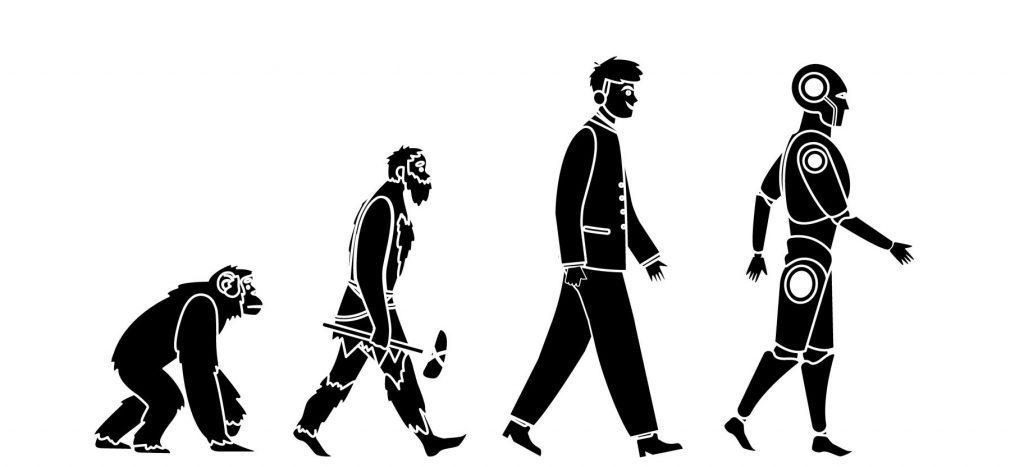
Rise of the robots: A developing country perspective
What are robots?
It is perhaps the biggest question of all! What image pops out in our minds when we think about robots? Most probably, some machine with a machine-like human body and guns, instead of hands? The blame for this goes to our film industries. They make robots look like things of destruction, but in reality, robots are the “things” that are making our daily lives easier.
Defining a robot is not an easy task. In simple terms: A robot is a machine that can function automatically. An elaborated definition could be: A Robot is a machine programmed to carry out complex tasks (Oxford English Dictionary). To better understand robots, let’s talk about the origin of the word (etymology) ‘Robot’ first. In 1920, a Czech writer named Karel Čapek wrote a play called ‘Rossum’s Universal Robots’ (USR). In this play, robots were characterized as futuristic human-made workers, created to reduce the burden of humans’ work. While writing this play, Čapek turned to his older brother, Josef, asking for names of these beings in the play, who then came up with the word “Robot.” The play became famous, and the word “robot” caught on. Here it is interesting to note that the Czech word Robotnik refers to a peasant, and Robota means drudgery [1]. (For enthusiast readers, this Wikilink can be an interesting read for an even ancient concept of robots). So, from the root of the word, we can see that robots are supposed to do hard work. Later this concept was standardized by the International Organization for Standardization (ISO 8373:2012)as: “actuated mechanism programmable in two or more axes with a degree of autonomy, moving within its environment, to perform intended tasks” [2].


In summary, robots are machines that humans make to help humans with their work. Mostly robots are automated and do not need any human interaction to carry out their work. Sometimes, there are robots for particular purposes that are made semi-automatic and need human input for carrying out tasks.
Types of robot
In modern times, robots can be divided into two main types depending on their usage:
1. General-purpose autonomous robots
2. Dedicated robots
General-purpose autonomous robots
This type of robot can perform various functions. They can typically navigate independently within a certain space. Some of them can re-charge themselves, interface with electronic and mechanical doors and perform other essential tasks. They can recognize people, objects, and some of them can even carry out a conversation. This type of robot can simultaneously carry out many tasks or take on different roles depending on the need.
Humanoids, or human-shaped robots that mimic the behavior of humans, fall into this category. Some famous humanoids are ASIMO from Honda, Sophia from Hanson Robotics, and Atlas from Boston Dynamics.
| Atlas [4] | Asimo [5] | Sophia [6] |
Dedicated robots:
Most of the robots in the modern world fall into this category. Primarily they are designed to do a single task. They are widely used in factories in modern times to help with production, which are also called “Factory Robots.” Some examples of Factory Robots are:
a. Pick and place robots: Used to place electronic components on PCBs
b. Packaging robots: Used to do product packaging
c. Automated guided vehicles: Mobile robots used for transporting goods around facilities.
d. Welding robots: Used in factories for metal welding.
There are numerous other examples of dedicated robots. In modern times, some software is also considered as robots, which can also be considered as dedicated robots.
Pick and place robot [7] | Packaging robot [8] |
AVG [9] | Welding Robot [10] |
Rise of robots
The rise of robots is not a sudden thing. It has been happening for the last 100 years. From hard labor such as mining, heavy lifting, faster and massive production, to dangerous tasks such as expeditions on a new planet, robots are being widely used.
Industry:
Most usages of robots are seen in production industries. Cheap labor is being replaced with robots, as they do their work very efficiently and do not complain about wages or overtime. An automated factory can run with a very minimum number of operators while maintaining 24/7 production. Robots are ruling over not only industrial production but also scientific research as well.
Research:
Unmanned Aerial Vehicles (UAVs) are used for geographical research. Submarine Robots help with underwater research. Nanorobots help with biomedical research. Swarm robots perform complex tasks together, which might help us improve the environment by helping bees and ants. Many research experiments are also done using robots as they can perform hazardous and complex tasks very accurately.
Space:
In space probes, we can say that every space shuttle ever launched is a robot. They can sense various things with sensors and relay our message about their surroundings. We can, in a sense, say that the robots have conquered the Mars and solar system before the humans have; and with the Voyager, they have even moved beyond.
Agriculture:
Recently, robots have a significant increase in usage in agriculture. Automated irrigation systems, automated monitoring, and picking of fruits, automated pest and plant disease detection, and treatment systems are good examples of robot usages in agriculture.
Military:
In military applications, robots are becoming popular day by day. UAV are modified and launched as UCAV or Unmanned Combat Air Vehicles. They can fly around themselves while tracking a target, sending surveillance data, and even attacking a specific target. Artillery systems already widely use robots for guidance and support.
Healthcare:
Healthcare is another sector where robots have a vast opportunity to bloom. Bionic body parts enable disabled persons to live a better life. Some care-taker robots support disabled and older people in their daily life. Disinfectant robots are used in hospitals to cleanse large areas. Some robots help in health diagnosis. In the near future, we might see nanorobots released into the bloodstream to help cure disease.
Entertainment:
Robots are already very popular in film industries as well as in literature. Other than being limited to science fiction, some robots are being developed solely for entertainment. There are robots designed for accompanying children, serving in restaurants, dancing, and singing. Robotic sports are also becoming very popular, which includes Robo-battle and Robo-race.
Robots in developing countries
Robots are capable of doing manythings. In most cases, they can replace humans and even do a better job at a lower cost;but, robots are still developing. They are improving day by day and are becoming more intelligent, more flexible, and more capable as research continues. And, for the development of new robots, a large number of people are hired. Let us get into the details of how robots are creating jobs and taking some of them away.
Robots stealing jobs:
Robots are stealing our jobs— is this a fact? According to recent studies, available routine jobs are declining [11, 12, 13]. What are routine jobs? These are low-paying work based on a narrow set of separate tasks requiring low skills. For example, product packing jobs. A robot specifically designed to do this task will outperform any human being while being cost- and time-efficient. This poses an imminent threat to people in these professions.
In developing countries, the number of people doing routine jobs is generally higher compared to developed countries. Most of the developing countries are not adopting robots at the moment as the setup cost is significantly high, but in the near future, there will be a surge of robots in industries in these countries as robots become more available and cheaper. Since the population density in the developing countries is also high, more and more people will be losing their mundane jobs to robots.
Creating jobs:
Although robots are stealing jobs, they are also creating new employment opportunities. For example, manufacturing robots is an emerging industry that will require many skilled workers in the near future. Mass manufacture of robots will also reduce the cost. This reduced cost will make developing countries adapt to automated robots for production. If robot production is done in developing countries, the cost can be lowered in a shorter time while improving the unemployment situation of the countries.
There are also some limitations of robots. They are not very smart, at least not yet. They are not creative and do not have the ability to produce art. They can only run in a systematic way. They are emotionless beings. The jobs that require human touch cannot be replaced by robots, such as art, research, writing a novel, creating something that does not exist.
Besides being able to replace creative jobs, robots also need humans to develop, maintain, and sometimes operate them. As we continually research on improving robots We are also creating new jobs for engineers, researchers, and even some level of regular labour-based jobs.
Conclusion
Robots are surely replacing humans, particularly in low-skilled routine jobs. . For developing countries, where skilled workers are limited, this could be a threat. Low-skilled jobs are mostly routine jobs or labor-intensive jobs, for which robots are specifically good at. However, robots are also opening a whole new industry––the development, installation, and maintenance of robots are becoming a new giant industry, creating many job opportunities. This also means that the requirement for the number of skilled workers will increase. The need for skilled professionals will also produce more skilled people, which will be beneficial for a country as the people’s gross intelligence level will increase. In developing countries, there is also the opportunity to grab the initiative of these new robot production industries. As labor is relatively cheap, the production cost of robots can be reduced significantly. Nevertheless, for this, the first thing that is needed is skilled engineers and advanced research.
In the end, are robots bad? No. Are they good? Probably. Is there a chance of robot invasion in the future? Absolutely yes. What can we do to prevent that? Build better robots for a better future.
References
- Kurfess, T.R. ed., 2018. Robotics and automation handbook. CRC press.
- ISO 8373:2012 – Robots and robotic devices — Vocabulary
- Unknown [Photograph]. Available at: http://www.umich.edu/~engb415/literature/pontee/RUR/RURsmry.html
- Boston Dynamics (April 2021) Atlas[Photograph]. Available at: https://www.pinterest.com/pin/247698048243436892/
- Honda (2010), Asimo[Photograph]. Available at: https://www.flickr.com/photos/arselectronica/4852180795
- Hanson Robotics (2018) Sophia[Photograph]. Available at: https://www.sun-sentinel.com/business/fl-bz-emerge-miami-sophia-robot-20180320-story.html
- RobotWorx, Pick and Place Robots. Available at: https://www.robots.com/applications/pick-and-place
- Loukas A. (2020), En kort guide til emballagerobotter: Deres art, brug og integration. Available at: https://www.howtorobot.com/expert-insight/short-guide-packaging-robots-their-kinds-use-and-integration-0?language=da
- Lydon B. P. (2018), Veículos Guiados Automatizados (AGVs) melhoram a produção. Available at: https://www.artschwager-kohl.de/en/example-integration-of-an-agv-in-sap-ewm/
- RobotWorx, Arc Welding 101. Availble at: https://www.robots.com/articles/arc-welding-101
- De Vries, G.J., Gentile, E., Miroudot, S. and Wacker, K.M., 2020. The rise of robots and the fall of routine jobs. Labour Economics, 66, p.101885.
- Schlogl, L. and Sumner, A., 2018. The rise of the robot reserve army: automation and the future of economic development, work, and wages in developing countries. Center for Global Development Working Paper, (487).
- Graetz, G. and Michaels, G., 2018. Robots at work. Review of Economics and Statistics, 100(5), pp.753-768.
- Defazio J. The evolution of robots[Photograph]. Available at: https://www.pinterest.com/pin/441352832235818399/
Written by:
Md Waliur Rahman Prottoy (@Protttoy) (https://sites.google.com/view/waliur-rahman-prottoy/)
Edited by:
Md Abdul Halim (@BiometHalim) (www.mdhalim.com)
Azmain Al Faik (@FaikWin)
Well written mate @Prottoy